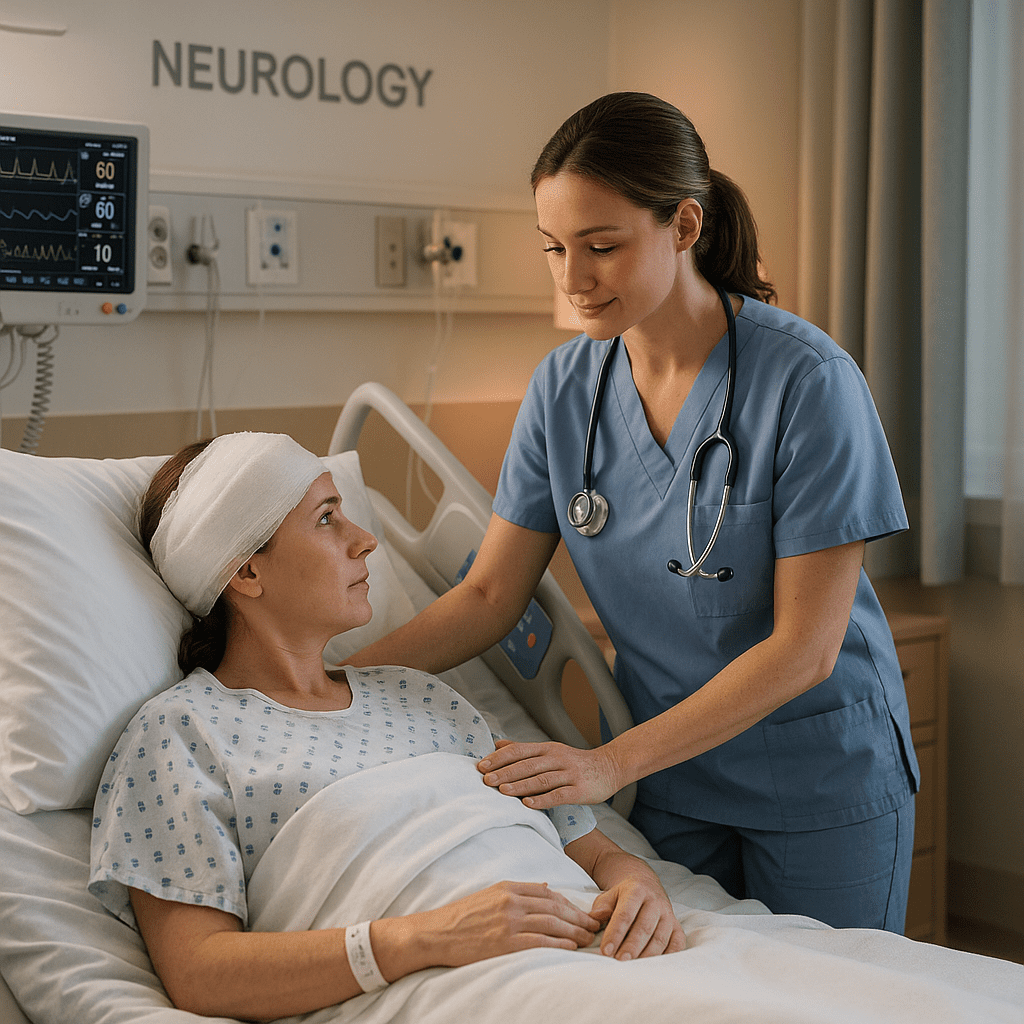Chiari malformation is a complex neurological disorder that every registered nurse should understand, especially when preparing for the NCLEX. This condition affects the structure of the brain and spinal cord, and recognizing its symptoms and nursing responsibilities is essential for safe and effective patient care.
🧠 What Is Chiari Malformation?
Chiari malformation occurs when brain tissue, typically part of the cerebellum, extends into the spinal canal. This happens when the skull is abnormally small or misshapen, causing pressure on the brain and spinal cord.
There are several types, with Type I being the most common and often discovered in adulthood. Types II, III, and IV are more severe and usually diagnosed in infants.
⚠️ Signs and Symptoms
For nurses and NCLEX candidates, identifying early signs of Chiari malformation is crucial. Symptoms vary depending on severity but may include:
- Headaches (especially after coughing, sneezing, or straining)
- Neck pain or stiffness
- Dizziness or balance issues
- Muscle weakness or numbness
- Difficulty swallowing (dysphagia)
- Vision problems or ringing in the ears
- Problems with coordination and fine motor skills
In severe cases, patients may experience hydrocephalus (fluid buildup in the brain) or spinal cord compression.
🩺 Diagnosis and Medical Management
Diagnosis involves imaging tests like MRI or CT scans that visualize the brain and spinal cord structures.
Treatment depends on the severity of symptoms:
- Mild cases may only require regular monitoring.
- Severe cases often need surgery, such as posterior fossa decompression, to relieve pressure and restore normal cerebrospinal fluid flow.
👩⚕️ Nursing Responsibilities for Chiari Malformation
As a registered nurse or RN nurse, your role involves continuous assessment, patient education, and post-surgical care. NCLEX questions often focus on safe care and monitoring for complications.
Key nursing responsibilities include:
- Neurological Assessment – Monitor for changes in consciousness, motor strength, and sensory function.
- Pain Management – Administer prescribed medications and evaluate effectiveness.
- Positioning – Maintain proper head alignment post-surgery to reduce intracranial pressure.
- Monitor for Complications – Watch for infection, increased ICP, or CSF leakage after surgery.
- Patient Education – Teach patients and families about activity limitations, medication adherence, and signs of complications.
- Emotional Support – Provide reassurance and psychological support, especially for children and parents coping with chronic neurological symptoms.
📘 NCLEX Tips for Nursing Students
- Expect NCLEX questions related to neurological assessments, ICP monitoring, and surgical care.
- Remember: Elevated ICP may show symptoms like headache, vomiting, and decreased responsiveness.
- Prioritize airway and neurological monitoring in postoperative care.
- Review your nursing bundles on neuro and cranial disorders for quick recall of nursing interventions.
💡 Key Takeaway for Nurses
Chiari malformation requires comprehensive and compassionate nursing care. Whether managing symptoms or supporting recovery after surgery, nurses play a central role in patient safety and education. A well-prepared RN nurse who understands this condition can make a life-changing difference in outcomes.
Studying disorders like Chiari malformation through structured nursing bundles and NCLEX-focused resources helps ensure readiness for both exams and real-life practice.
In summary:
Chiari malformation challenges nurses to combine technical knowledge with empathy. Understanding its pathophysiology, monitoring techniques, and patient-centered care makes every registered nurse better equipped to provide holistic, safe, and effective nursing care.
🧠 FAQ
Chiari malformation is a structural defect where brain tissue extends into the spinal canal, often due to a small or misshapen skull. This can cause pressure on the brain and spinal cord, leading to symptoms such as headaches, neck pain, balance issues, and dizziness. Understanding this condition is essential for every registered nurse preparing for the NCLEX.
Nurses should observe for headaches that worsen with coughing or sneezing, neck pain, poor coordination, numbness or tingling in the extremities, and difficulty swallowing. These findings help Rn nurses identify complications early.
Diagnosis typically involves MRI or CT scans to visualize the brain and spinal cord. Nurses play a key role in preparing patients for these imaging procedures and providing post-diagnosis education and emotional support.

